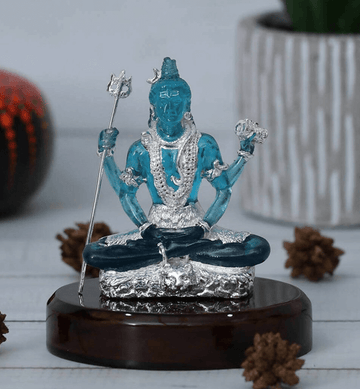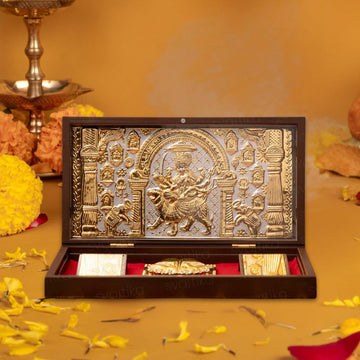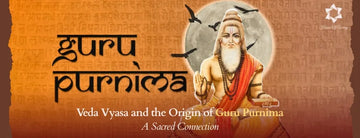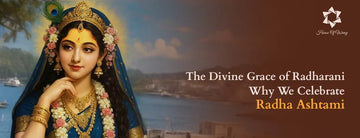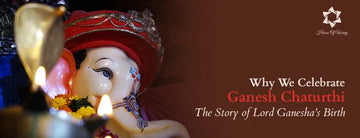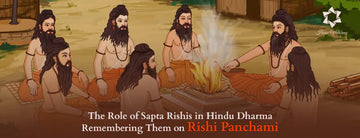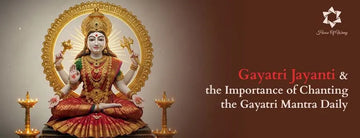Honouring the First Guru of Sanatan Dharma
Introduction:
During the full moon day of Ashadha, so many people in India light lamps, offer their prayers to the guru, and silently extend their gratitude through verses. For every Hindu calendar and every Sanatan Dharma devotee, Guru Purnima in Indian culture is a holy day. But why? Does it even have to do with Veda Vyasa?
Those seekers who live far away from the holy rivers of India and temples may feel detached as they recall the experience of touching their guru's feet or laying flowers at his home altar. Even so, the spirit of Guru Purnima, which remembers the illumination of knowledge or wisdom that dispels darkness and ignorance, is much alive in this present day, in a world that is so fragmented and fast-paced. This day is a reminder to stop, pause, and re-engage with the process of imbibing profound, divine wisdom imparted by a guru who learnt from another guru, and so on back through an endless sequence.
Who Was Veda Vyasa?
Ved Vyasa, or Krishna Dvaipayana, was a cosmic link between divine knowledge and human realisation. His father was Parashara Maharshi, and his mother was Satyavati. He was born on an island in the Yamuna River. Surprisingly, the Birth of Veda Vyasa is considered sacred, and the name Vyasa means "one who compiles" or "one who arranges."
It is said that he was born on Ashadha Purnima, a full moon day in June and July. This day was celebrated by one and all as the Vyas Purnima story or Guru Purnima.
In an era of oral culture, Vyasa and the Vedas became inseparable. Vyasa thus retained the gift of knowledge by organizing and writing down the Vedas, the compilation of the Mahabharata, the writing of the Brahma Sutras, and the Puranas themselves. The Veda Vyasa significance is key to Hindu thought itself.
The Role of Veda Vyasa in Preserving the Body of Vedic Knowledge
Prior to Vyasa, the Vedas, as Rig, Yajur, Sama, and Atharva, represented one composite, indivisible body of knowledge. Recognising the daunting task involved in storing and passing this knowledge down through generations, Vyasa divided the Vedas into four parts and assigned them to specific disciples:
- Rigveda to Paila
- Yajurveda to Vaishampayana
- Samaveda to Jaimini
- Atharvaveda to Sumantu
Through this structure, Vyasa and the Vedas began the long lineage of Vedic gurus and teachings. In doing so, Vyasa opened the door to a great guru-shishya parampara, a lineage in which knowledge could not be owned, but rather, gifted.
Why Guru Purnima is Recognised in Honour of Veda Vyasa
Many people ask: Why Guru Purnima is celebrated? The answer encompasses more than ritual; it involves devotion. On this sacred day, aspirants honour Veda Vyasa as the Adi Guru, the first spiritual teacher who organised spiritual knowledge on behalf of humanity.
The Guru Purnima and Vyasa connection reaches far beyond commemorative history; it is a spiritual partnership. The full moon, like the guru, symbolises illumination and presence in the disciple's inner sphere. The History of Guru Purnima is woven with divine intent and cosmic symbolism. The Skanda Purana says that worshipping one's guru on this day is equivalent to worshipping Brahma, Vishnu, and Mahesh together.
The Spiritual Significance of the Guru in Sanatan Dharma
The Meaning of Guru in Hindu tradition can be understood by breaking it down into two parts:
- Gu, meaning 'darkness'
- Ru, meaning 'remover'
A Guru is not simply a teacher; A Guru is a remover of darkness within. The Guru Gita states:
“गुरुर्ब्रह्मा गुरुर्विष्णुः गुरुर्देवो महेश्वरः।
गुरुः साक्षात् परब्रह्म तस्मै श्रीगुरवे नमः॥”
The Spiritual importance of Guru Purnima lies in this understanding that the guru is the living dimension of the divine.
How Vyasa Became the First Guru in the Guru-Shishya Tradition
Vyasa is more than a compiler; he lived as he communicated. He had embedded disciples with his son Shuka, and he had included a grand-disciple Suta, who carried the Vedic message onward to generations yet to come. The line of tradition he started from guru to disciple, wisdom to heart, has been the creators of the Vedic gurus and teachings, which form the core of present-day Hindu dharma.
Every Indian darshan-advaita, dvaita, bhakti, tantras-goes back to this lineage in some fashion. And Guru Purnima in Indian culture is the sacred day to remember, reaffirm, and rejoice in that lineage.
Why is this day identified by the lunar calendar to pay respect to the guru?
As it pertains to Hindu astrology, Purnima means full, poornata. The moon represents our mind, and Purnima festivals in Hindu calendar always align with cosmic and spiritual meaning. The full moon is illuminated by the complete light of the sun; similarly, the disciple receives the illumination of the guru on this day.
Just as there are a number of Purnima festivals in Hindu calendar, like Sharad Purnima, Kartik Purnima, and Guru Purnima, the sages also identified cosmic energies that relate to human consciousness. Therefore, it was not an arbitrary choice of days; it was a chosen day through yogic intuition.
Ancient Customs and Traditions of Guru Purnima Celebrations
Customarily, Guru Purnima rituals are:
- Paduka Puja: Worship of the sandals of the guru; sacred because they represent the archaic footprints on the path of dharma.
- Recitation of Guru Stotra, the study of the Guru Gita, and other scriptures.
- Offering of Dakshina: A notional currency, usually not transferred in actual currency, as stated in their resolve: "I offer my ego, laziness, and ignorance."
- Study of scripture: Revisiting some of the Vedas or Upanishads, or epics in the presence of the guru.
Even at home, try some simple Guru Purnima rituals; for example, light a diya before a picture of your guru or read a passage from the Gita, to take advantage of the sanctifying energy of the day!
Guru Purnima in Modern Times: What Powers Does the Day Hold for a Spiritual Seeker?
In current times, where the gurus of today appear on YouTube and in an ashram, what significance does Guru Purnima hold? For seekers carving through modern life, a guru could be a mentor, a book, or a little voice from within. The celebration need not be loud; the intention behind it ought to be sincere.
For Hindus outside their motherland, creating a home altar with a symbol of knowledge, like a Hindu Spiritual Gift, can be grounding. A sacred Tulsi plant, a wooden idol of Vyasa fashioned by hand, or verses from the Gita could go a long way in restoring one's spiritual identity.
At The House of Wemy, we create a sacred Hindu Spiritual Gift to honor your guru or your own inner journey via handcrafted Vyasa-inspired icons and devotional décor, to be reminded every day of this sacred lineage.
How Different Indian Philosophical Schools Honour Their Gurus on This Day
- Advaita Vedanta: Celebrates the unbroken lineage from Adi Shankaracharya to the modern acharyas. Satsangs and scriptural discourses are held in the maths and homes.
- Bhakti Schools: Devotees honour saints like Namdev, Ramanuja, or Chaitanya Mahaprabhu with bhajans and storytelling.
- Tantric Paths: Place great importance on mantra diksha and meditating deeply on the form of the guru.
Though the methods are different, the basis is one: the Role of gurus in Hinduism is a deep and heartfelt pranāma to the guru who leads from darkness to light.
Gratitude and Knowledge Transfer in Hindu Culture
In Sanatan Dharma, knowledge is never exchanged for money; it is something sacred. And gratitude is the thread that holds it.
On special occasions like Guru Purnima, we are asked to pause and reflect on:
- How did my lamp get lit for the very first time?
- With what values was my soul enriched?
- Have I honoured the knowledge given to me in any way?
It is a celebration not of the past but rather that sustains the living tradition-shaping some of us to become bearers of that torch in days to come. Gifting a symbol of knowledge-interpreted as a Vyasa idol, a sacred scripture, or a diya-is not treated as mere decor in the Hindu spiritual gift culture; rather, it is imparting one's legacy.
Astrology & Numerology Insights: The True Explanation of Why Guru Purnima Astrologically Aligns
Guru Purnima origin is declared when the moon enters either the sign of Sagittarius or Capricorn. Because both these signs are ruled by Guru, or the planet of wisdom. Numerologically, the full moon in Ashadha brings forth energies of completion, clarity, and renewal.
Such an application would recommend spiritual sadhana, mantra chanting, and initiations. On such a day, any small step taken consciously and intentionally gains great spiritual power.
Final Take
With the moon rising on Guru Purnima night, remember that this is not merely the history of Guru Purnima; like all festivals, it is its living spirit. Whether underneath your guru's feet or all the way away from his feet, the very process of reading through the verses has ensured the survival of this tradition through fire, flood, and forgetfulness because gratitude simply does not perish.
So ask yourself:
- Who are the gurus in your life, spiritual or otherwise?
- What wisdom have they gifted you?
- And how will you honour that sacred gift today?
If you wish to celebrate Guru Purnima with intention, explore Wemy’s curated collection of Hindu spiritual gifts, each handcrafted to bring sacred aesthetics into your modern home. Let your space become a living altar of reverence.

